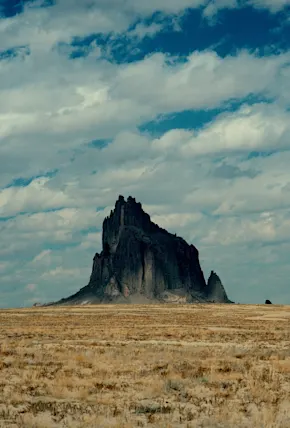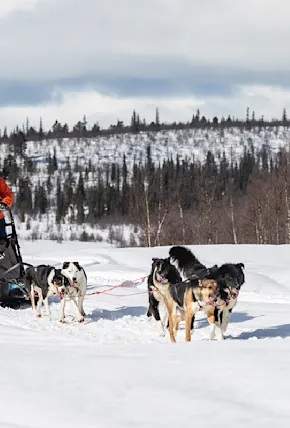Gear We Recommend for Dogsledding Trips
As mentioned, Wintergreen has gear rentals of all kinds—warm jackets, warm boots, skis, etc. That said, I found that having my own gear was a big bonus. It meant fewer blisters, more familiarity with how the gear performs, and trust in the warmth, allowing me to be more focused on the experience at large. These are the four pieces of gear that I loved and would highly recommend to any winter campers.
When approaching a wide variety of conditions—wind drifts across lakes, slushy spots, technical portages, and a sneaky breakable crust, you want a backcountry cross country ski that is as versatile as possible. That’s exactly how Rossignol designed the new Positrack, a steel edge to increase grip, a fishscale waxless kick and glide, and the widest underfoot ski on the market to keep you light and floating in deep snow. This ski was a true game changer for us. We recommend outfitting them with Rossi's Explore Bindings ($230).
Price: $400
SHOP NOW
While in camp or mushing the sled, I switched to the Apex, a polar-rated boot with a waterproof base that is amazingly good at thermoregulating. I had no issues with cold toes, even on days near zero degrees, no issues in slush, and even stayed warm while hanging out late into the evening.
Price: $290
SHOP NOW
The warmest down layer manufactured by one of the premium outdoor brands did not disappoint on our trip. Designed for shiver-free belays on alpine routes, the high-loft yet highly packable warmth was a key tool for us in staying warm while dog sledding in one of the coldest places in the continental US. By the end, nearly everyone else in the group wanted one.
Price: $400
SHOP NOW
Created for Canadian guides who needed a reliably warm glove for long days working outside, the Heli Ski Mitt has been a go-to of mine for years. The durable leather gives a good grip and feel, although some dexterity is sacrificed with the extreme amount of warmth it provides. I often use a liner with them, which helped my fingers stay warm while clipping dogs into the line, cooking food, sawing firewood, and otherwise.
Price: $160
SHOP NOW






























